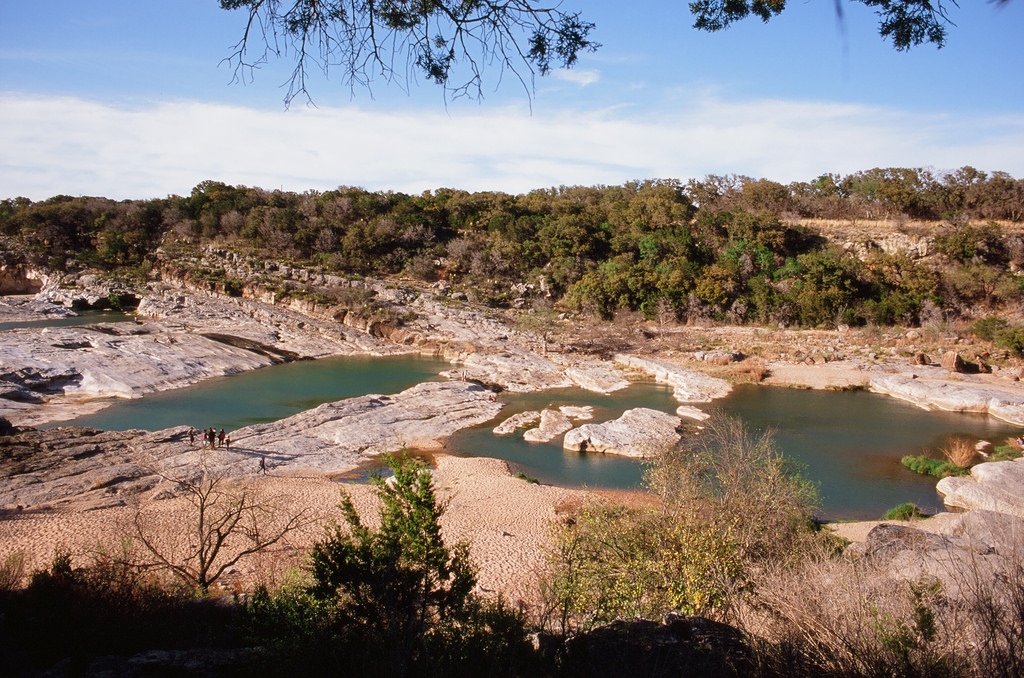Drought now affecting two-thirds of Texas

The State of Texas is growing thirstier with each and every passing day, as drought conditions continue to dry up the land. According to a new drought report from the Texas Water Development Board, the Lone Star State is now experiencing "worse" drought conditions in over two-thirds of the Texas territory. Emergency preparations are already being considered, including ocean water desalination efforts.
Four-month dry period may bring Dust Bowl-like conditions for Texans
A four-month dry period lasting from December through March has plagued most of the state. Climatologists have even mentioned that Dust Bowl-like conditions may be on the horizon if spring doesn't bring much-needed rain. Reports from Knox County indicate dusty conditions; cotton producers are preparing their planting beds in between dust storms, according to local reports. West of Knox in Lubbock County, sustained high winds with gusts over 50 mph were measured on March 18, as the dry soils billowed up and gained steam in the wind gusts.
Water prices could spike, as construction of new desalination plants considered
The average price of water in some areas of Texas is 25 cents per 1,000 gallons, but that price could be on its way up if the rains don't come. State officials are beginning to consider using ocean water from the Gulf of Mexico to help curb the drought. In fact, state officials are beginning to discuss new projects allowing for the desalination of ocean water as an emergency water source. This would require new plants to be constructed that use reverse osmosis technology. In desalination, water is pushed through a special membrane that forces minerals, ions and salt to be separated from the water. Experts in the field believe this expensive procedure could increase water prices by 12 to 24 times their average price. New prices may reach up to $6 per 1,000 gallons of water! Texas already has 40 desalination plants in place, which are currently in use for filtering the state's 2.7 billion acre-foot deposits of brackish water.
"We have enjoyed extremely inexpensive water, or close to free water for a very long time," said Kyle Frazier, executive director at the Texas desalination association. "Those days are going, especially in this state."
Reservoirs losing hundreds of thousands of acre-feet of water
Currently, the drought report shows "moderate to worse" drought conditions affecting at least two-thirds of the state, with "extreme" drought conditions hitting at least a quarter of the state.
Four months ago, the report showed 46 percent of Texas affected by moderate to worse drought conditions. Today, it's 67 percent and counting. The hardest hit are those living in the northern and northeastern portions of the state, where rainfall amounts are 50 percent below normal. Reservoirs in the state are drying up at unprecedented levels. A year ago, at the end of March, the reservoirs contained 472,740 acre-feet more than they do today. If the drought continues steadily, entire reservoirs could dry up. Check out these pictures of the drought conditions, including dried up reservoirs.
Sources for this article include:
http://www.chron.com
http://www.chron.com
http://www.chron.com
Republished with permission from Natural News
Written by L. J. Devon
Featured image: Pedernales Falls State Park, March '14 by http://www.flickr.com/photos/37837501@N04/13788074925

One of the richest oil states has not spent money on essential water preservation. The money has been spent on something else and now the public have to cough up, again.
Blame climate change all you want but this situation has nothing to do with it. The first way to control population centre is to have governance over water and food supplies…. 25cents per 1000 gallons is nothing, cheap, and the powers that be have organized this, lulling citizens into a false state of security and now holding the threat of increasing water charges to 600 cents per 1000 gallons. This threat is insignificant and not even reflective of other parts of North America.
In Canada the 2001 charge for domestic water was 114 cents per 1000 LITRES or approx 450cents per 1000 gallons
http://en.wikipedia.org/wiki/Water_supply_and_sanitation_in_Canada
On my water bill received two days ago the price of water here in the City of Warman, Saskatchewan, was 7800 cents for 220 gallons!!!! You read correctly $78.00 for 219.975 gallons, and this figure doesn't include the $30.00 fee for sewage, making water and sewage $108.00 for 220 gallons.
Just to put this figure in perspective…my Water cost was 28 cents per gallon before sewage, that is 56 cents per toilet flush! I have my bill to prove it.
Are humans so asleep they cannot see what is happening!